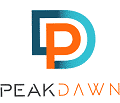Making Teams Feel Trusted and Safe
How To Foster Trust, Accountability, and Motivation
Everybody is under psychological and financial stress with COVID-19. Quite frankly I’m sick of seeing that word and thinking about it. We live in a world barraged by negative news, restrictions on our civil liberties, and at work, we’re stressed. I don’t know about you, but I miss my mates, I miss going to the gym, I miss feeling FREE to walk the streets without fear of being fined.
If you are the Owner, Director, or Manager at a business, you are probably worried about managing costs and wondering where revenue will go in the year ahead. If you are an Employee, you are likely to feel anxious about the health of the business, the security of your role, and whether your livelihood is threatened.
In a world that seems threatening, we need to make our teams feel safe.
A Message for Leaders
It is understandable that now is a time to hustle. Now is a time to optimise. Now is a time to be face fiscal facts and assess the solvency of your business. The burden of that is primarily on you, however. Trust me, I know how you feel because I’ve been a business owner for a decade now, so fully appreciate the weight you have to bare.
The wisdom is be wary not to let your burden leak down too much onto Employees. It isn’t their role to feel the burden that you feel. Their role to fulfil their job description. If you want to maintain their trust in you, you need to make them feel safe.
So, once you’ve gotten your strategic response in place, what do you do?
Nourish Your Team, Build Trust, Leverage Talent, and Celebrate
The traditional office environment allows for casual interaction and for culture to breath. During this challenging time, a lot of us are working remotely, connecting on email, phone and video conferences. It is understandable that Leaders want reassurance their team are getting the job done, but rather than micromanaging, there are ways to enable by knowing everyone’s individual talents. Gallup has shown that Managers account for 70% of Variance in Employee Engagement, which means it is incumbent upon leaders to foster an environment, albeit often remote, where employee’s talents are used everyday. By employee’s using their talents daily, they thrive….
Employees Who Use Their Strengths Outperform Those Who Don’t
When Leaders foster employee engagement and actively position employees to leverage their talents daily, they are:
- Three times more likely to report having an excellent quality of life.
- Six times more likely to be engaged at work.
- 8% more productive.
- 15% less likely to quit their jobs.
Gallup Study (source).
That’s a compelling Business Case.
But, What About Trust?
When you set your team up for success like this, they feel celebrated, their self-esteem is higher, and they feel seen. I personally think Leaders are demonstrating a sense of loyalty to an employee’s truer self when they lead this way. When one does so much for someone, it is more natural that they want to repay you in spades. Trust, after all, is a two way street. The workplace can be dry, overly professional, and lack a sense of belonging or bonding amongst colleagues. By demonstrating that employee’s are valued for their natural talents, they are both engaged but also perform.
If you know that your employees are both more engaged and more productive, then you can trust them. They will inherently trust you more too.
Accountability & Talent
Business is business and performing in one’s role is crucial. We cannot remove the numbers, the KPIs, the metrics, or the objective criteria that need to be met.
Having said this, there are nuanced ways into which we can tap into Accountability via Relationship.
Take the example of an employee with a high sense of responsibility. Their responsibility means they take psychological ownership for the things they say yes too. If this person is managed by someone with a strong sense of command, there is a risk that the boss with command steps on the toes of the person with responsibility. The commanding boss thinks they are dealing with the situation perfectly because they are “taking control” of a stressful situation. The employee, however, is repelled and annoyed because the boss is doubting the commitment that employee has already made. This is worse than classic micro-management because the boss has unwittingly broken trust and accountability in that moment. If the boss wants to maintain accountability it is better to treat the employee with respect and recognise that they have “got this”. The boss can still review the numbers, still do the necessary, but they should ask respectful questions so that the employee maintains true ownership. I know this story too well because I was that commanding boss once. My business was my baby, and I had an Operations Manager crying out to let me leave them too it. The second we came to this mutual realisation was the second I let go. We still had our meetings, still checked in on status, but my colleague now felt free to shine. This person was already great at what they did, but this subtle shift in our professional relationship turned them into outstanding.
I bring up this example not just as an interesting story, but as a way of demonstrating that different talents have ways of interacting with one another.
Some talents, when mixed together, are liable to “blow up”, if not managed correctly, and others need a specific manner of nourishment (from the Leader) so that the employee thrives.
Without having an objective measure of one another’s talents, Leaders are flying blind.
What About Motivation?
“Intrinsic motivation is … a stronger predictor of job performance than extrinsic motivation. The more people focus on their salaries, the less they will focus on satisfying their intellectual curiosity, learning new skills, or having fun, and those are the very things that make people perform best.”
Source: Harvard Business Review
I confidently posit that intellectual curiosity, learning new skills, or having fun is directly related to the usage of talent.
In the CliftonStrengths (R) methodology, talents are defined as “natural patterns of thinking, feeling and behaving”. So, for example, if you have a Strategic talent (which I do), then you LOVE thinking about the best possible route. You are driven to find the approach before you begin, and intellectually you are able to think quickly about the hundreds of scenarios that could occur whilst picking the best course of action. Others often have no idea how you just thought this through so quickly, but fellow Strategists thrive when brainstorming “battle plans” with you. The same goes for my Positivity talent, in which I have fun in lighting others up. With my Futurist talent, I enjoy helping others paint a picture of their vision. And, for my Focus talent, I enjoying pursuing, driving, and prioritising. I could go on all day….
There will be talents that you have, your team has, and they are all different, all unique, but all naturally there. These things transcend Skills, CVs, and Job Experience. They go deeper than that.
By understanding our individuals’ natural patterns of thinking, feeling and behaving, we get insight into their curiosity, what they like to learn, and what they consider “fun” within the work context .
The Moral Of This Story
During COVID-19, amongst remote working, amongst challenging economic times, I wish every leader all the success in finding a successful commercial strategy. Once you’ve pointed your ship in the right direction, I can only encourage you to realise that Trust, Accountability, and Motivation is sitting right in front of you. It’s in your People.
Interested To Know More?
I am a Certified Strengths Coach via Gallup and help individuals and teams thrive globally, via the CliftonStrengths methodology. This method and online test gives us exactly what I’ve written about here. It tells us the natural talents of your team and, through facilitation, we get a lens into a new way of working together. Get in touch anytime and I’d be happy to talk to you about it if you would like me to run a workshop for your team.
P.s. we run these workshops via Zoom, with virtual breakout rooms, and all the outcomes that you’d get from an in-person event, so why wait?










